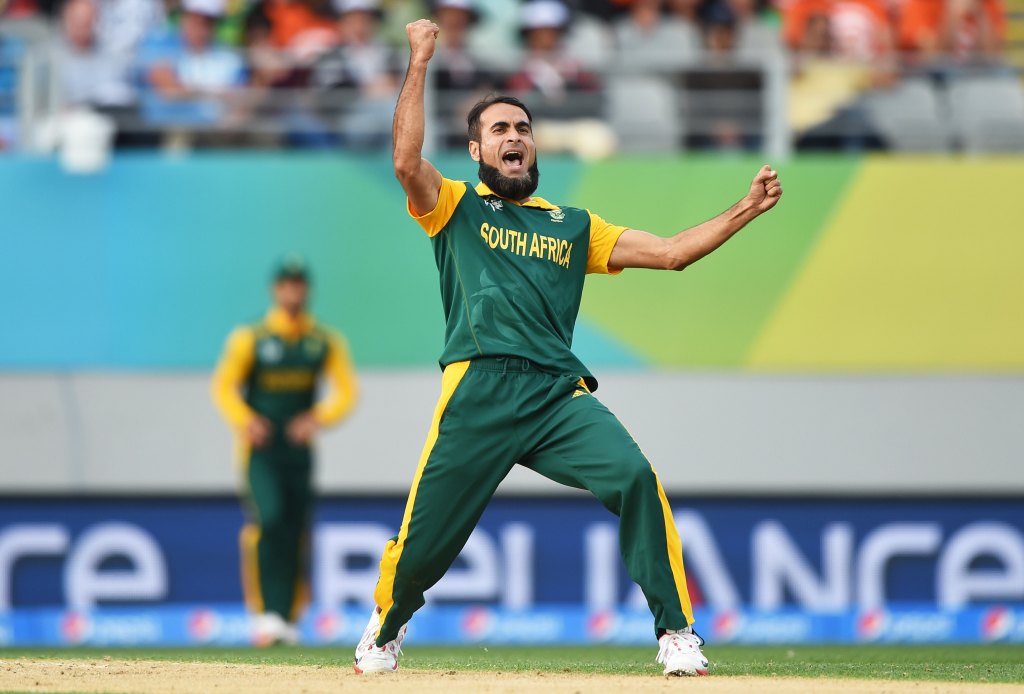New Zealand had never scored more than 298 runs in 50 overs against South Africa in 61 ODIs.
At Eden Park, on a huge World Cup stage, they scored 299 to advance to the final – and got their runs in 42.5 overs. Grant Elliott ended this pulsating contest with a six off Dale Steyn, and both the result and the finishing blow itself put the finger on where South Africa fell short.
Agonisingly so. Heartbreak. Again.
To win the World Cup, indeed even to reach the final, always depended on South Africa’s bowlers being able to defend the big scores compiled by their batsmen, whose top six is equal, if not better, than anyone else in the tournament. Mostly when batting first.
South Africa’s momentum was slowed drastically at 216 for 3 when the rain came down after 38 overs with Faf du Plessis unbeaten on 82 and AB de Villiers in the zone on 60. They had accelerated smartly and were looking to create mayhem in the last 12 overs. The platform had been set and 350 was on the cards. The rain came at a cruel time for South Africa.
As good as New Zealand are, they wouldn’t have chased down 350. They had never previously scored 300 against South Africa and the scoreboard pressure would have got to them, given the size and length of the chase. Or would it have?
We’ll never know. What we do know is that after David Miller’s late blitz once play had resumed, New Zealand were left to chase 298 to win the game off 43 overs, thanks to the Duckworth-Lewis adjustment. They had never scored that many runs in a 50-over ODI against South Africa.
An out-of-sorts Steyn went for eight in the first over and Vernon Philander was thrown the other new white ball from the other end. His six deliveries went 4b, 6, 4, 0, 0, 4. Brendon McCullum had teed off and 18 runs came off the over as the Black Caps went for broke.
De Villiers then told Morne Morkel to replace Philander for the fourth over, although the carnage continued unabated. Suddenly New Zealand were 71-0 after five overs, and it took the introduction of the impressive Imran Tahir to stop the bleeding in the sixth over. His pressure allowed Morkel to get rid of McCullum with the first ball of the seventh over.
Philander returned to bowl the eighth over and then was immediately replaced – at the end of the batting powerplay – by JP Duminy. It’s as if De Villiers simply didn’t have the necessary faith in Philander.
The latter had been chosen ahead of Kyle Abbott in the starting XI. This was a strange decision, because Abbott had been inspirational with Steyn at the start of the Sri Lankan innings in the quarter-final. Both shared a wicket as they reduced their opponents to 4-2 and Sri Lanka never recovered. It set up a sensational nine-wicket victory by South Africa who produced a perfect-10 team performance on the day.
And then Abbott, who’d taken nine wickets in four matches at this World Cup, was replaced by Philander, who had missed three games due to injury. And in those in which he had played he had taken four wickets, two each against Zimbabwe and the UAE. It’s not as though he was in wrecking ball form and room had to be found for him.
I’m not saying that Philander cost South Africa this semi-final. And he ‘only’ went for 52 runs in his wicketless eight overs – compared to Steyn’s 1-76 in 8.5 overs – but he was part of a bowling unit that should never have allowed New Zealand to get close. At 151-4 after 22 overs, needing another 147 runs to win in 21 overs, and with South Africa well into the middle-order, the bowlers let things slip. Abbott would have been the smarter call. If it ain’t broke don’t fix it.
Kiwis will point to Grant Elliott and Corey Anderson’s 103-run partnership as the match-winning one, and it was, but they were allowed to stay in touch because most of the bowlers sent down pressure-releasing bad balls at the wrong time.
Tahir was exemplary with his 0-40 off nine and Morkel took 3-59, while the fifth bowler of JP Duminy and De Villiers went 1-64 off eight. On a night when more than one bowler needed to stick up his hand – that man was Tahir – the others went missing.
Steyn and Philander left the field for a while, the former nursing a hurt hamstring, and with the rub of the green going New Zealand’s way in the field, the Kiwis snuck over the line for a famous victory.
But in the context of the 62 ODIs that the two teams have played, this run chase was a record-breaking one and for that reason the bowling unit got it wrong. As did the South African selectors.







